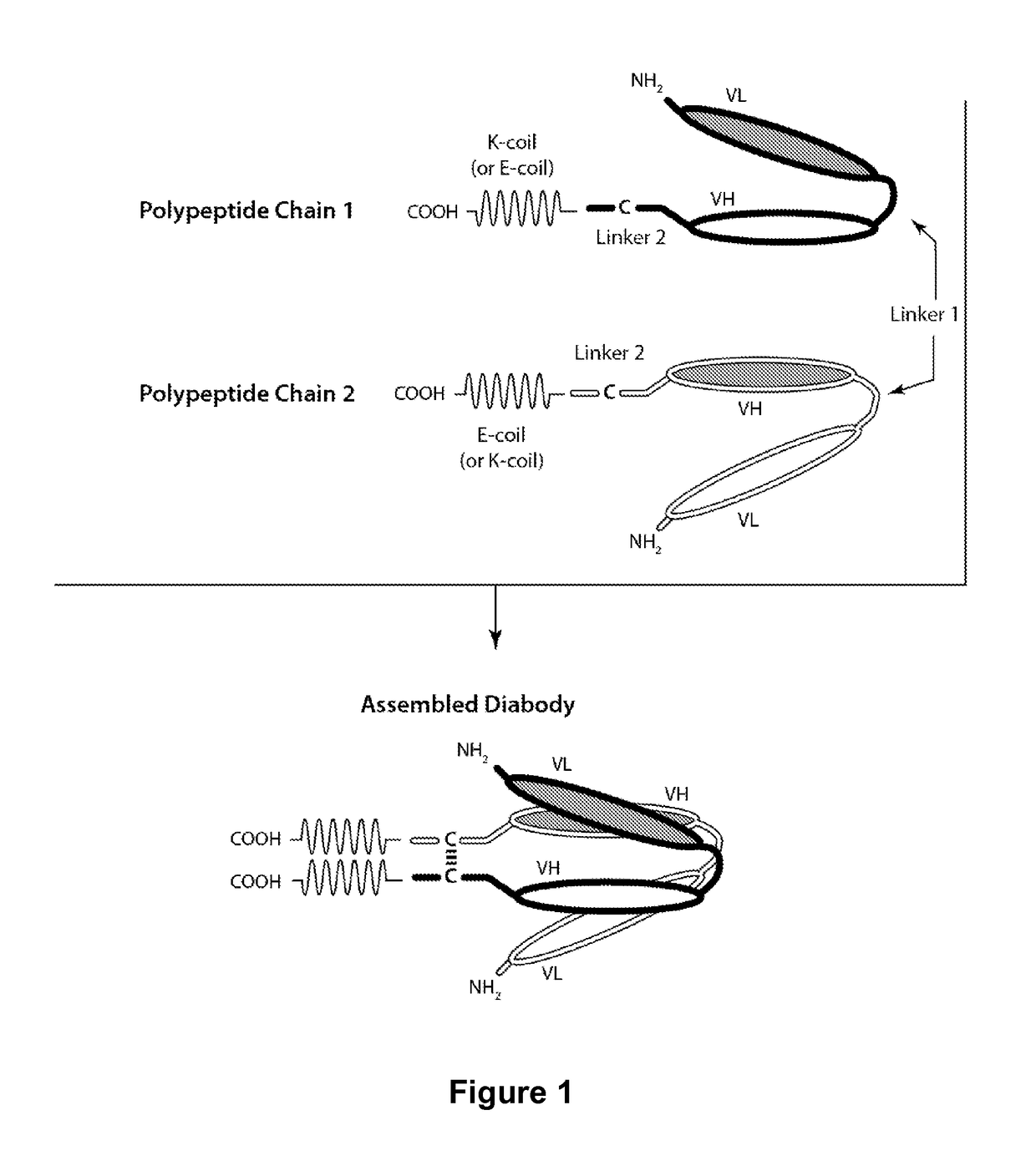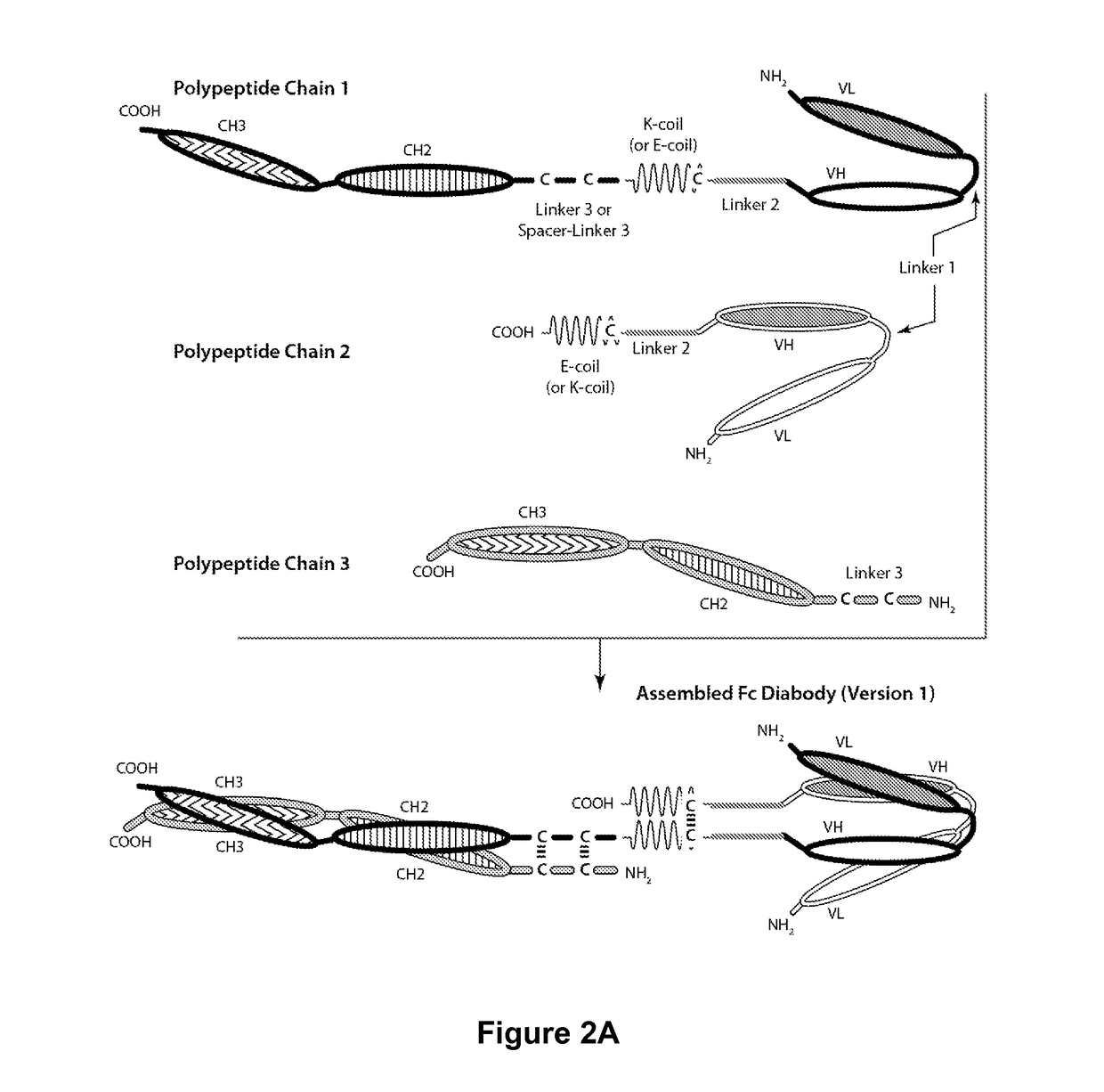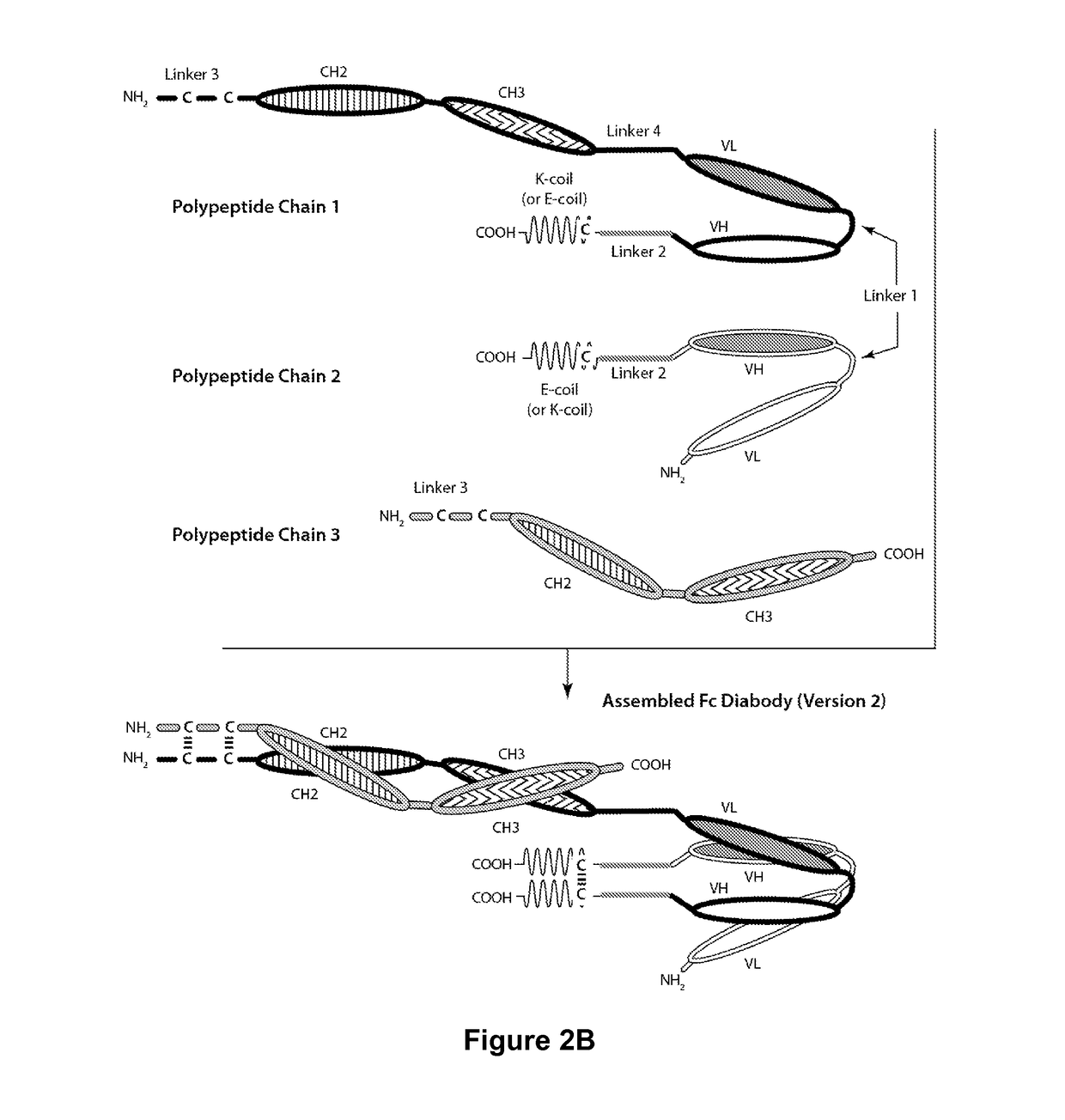Bi-Specific Monovalent Diabodies That are Capable of Binding CD19 and CD3, and Uses Thereof
a monovalent diabolic and bi-specific technology, applied in the field of bi-specific monovalent diabolics, can solve the problems of compromising and trade-offs, and many traditional regimens are also associated with considerable acute and long-term toxicities,
- Summary
- Abstract
- Description
- Claims
- Application Information
AI Technical Summary
Benefits of technology
Problems solved by technology
Method used
Image
Examples
example 1
Quantitation of CD19 Cell Surface Expression
[0230]To identify suitable target cell lines for evaluating the biological activity of CD19×CD3 bispecific diabodies, CD19 cell surface expression levels were first confirmed using quantitative FACS (QFACS) on a panel of human B-cell lymphoma / leukemia cell lines, including Nalm-6 (acute lymphoblastic leukemia), Raji (Burkitt's lymphoma), Daudi (Burkitt's lymphoma), HBL-2 (mantle cell lymphoma), MEC-1 (chronic lymphocytic leukemia), and Jeko-1 (mantle cell lymphoma), MOLM-13 (acute myeloid leukemia cell line), JIMT1 (breast cancer) and Colo205 (colon cancer). Absolute numbers of CD19 antibody binding sites on the surface were calculated using a QFACS kit. As shown in Table 3, the absolute numbers of CD19 binding sites on the cell lines were in the order of Raji (high)>Nalm-6 (medium)>Daudi (medium)>HBL2 (medium)>MEC-1 (low)>Jeko-1 (low). As expected MOLM-3, JIMT-1 and Colo205 lacked CD19 expression, which is consistent with CD19 being a B-c...
example 2
[0231]In order to quantitate the extent of binding between a CD19×CD3 bi-specific monovalent diabody and human or cynomolgus monkey CD3, BIACORE™ analyses were conducted using the illustrative CD19×CD3 bi-specific monovalent Fc diabody, DART-A. BIACORE™ analyses measure the dissociation off-rate, kd. The binding affinity (1(D) between an antibody and its target is a function of the kinetic constants for association (on rate, ka) and dissociation (off-rate, kd) according to the formula: KD=[kd] / [ka]. The BIACORE™ analysis uses surface plasmon resonance to directly measure these kinetic parameters.
[0232]The results of binding of DART-A (0-100 nM) to soluble human and cynomolgus monkey CD3 and CD19, analyzed by surface plasmon resonance (SPR) technology (BIAcore), are shown in Table 4.
[0233]The binding affinity of DART-A is similar for human and cynomolgus monkey CD3 (KD=21.2 nM and 21.9 nM, respectively). However, DART-A has an approximate 10 fold lower affinity for ...
example 3
Cell Binding Characteristics
[0234]DART-A binding to mouse, rat, rabbit, cynomolgus monkey, and human blood leukocytes (purified from whole blood) was evaluated in vitro by flow cytometry. Leukocytes were stained with DART-A, as well as Control DART 1 and Control DART 2, at concentrations of 25 or 100 nM for approximately 1 hour. Control DART 2 contains the same CD19 binding component as DART-A, while Control DART 1 contains the same CD3 binding component as DART-A. Following incubation, DART proteins bound to leukocytes were detected with an anti-E-coil / K-coil (EK) mAb, which recognizes the EK coil heterodimerization region of the DART proteins. No DART-A binding was observed on mouse, rat, or rabbit blood leukocytes. Likewise, neither Control DART diabody showed any binding to mouse, rat, or rabbit leukocytes. As expected, both concentrations of DART-A tested showed specific binding to both human and cynomolgus monkey blood leukocytes.
[0235]A bifunctional ELISA assay was used to de...
PUM
| Property | Measurement | Unit |
|---|---|---|
| length | aaaaa | aaaaa |
| concentration | aaaaa | aaaaa |
| period of time | aaaaa | aaaaa |
Abstract
Description
Claims
Application Information
 Login to View More
Login to View More - R&D
- Intellectual Property
- Life Sciences
- Materials
- Tech Scout
- Unparalleled Data Quality
- Higher Quality Content
- 60% Fewer Hallucinations
Browse by: Latest US Patents, China's latest patents, Technical Efficacy Thesaurus, Application Domain, Technology Topic, Popular Technical Reports.
© 2025 PatSnap. All rights reserved.Legal|Privacy policy|Modern Slavery Act Transparency Statement|Sitemap|About US| Contact US: help@patsnap.com



